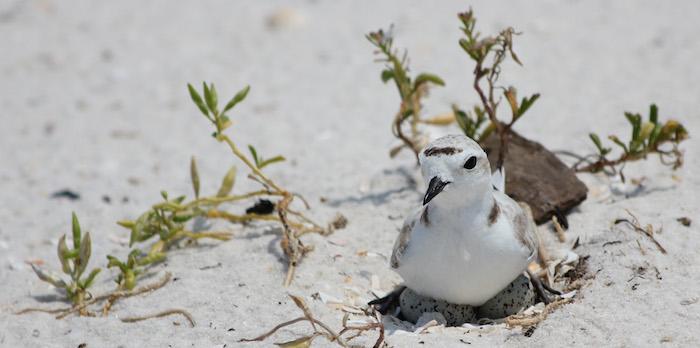
Shorebirds are beginning to nest at Gulf Islands National Seashore and visitors are being urged to watch out for them/NPS
Visitors to Gulf Islands National Seashore along the Florida-Mississippi coasts are being asked to watch out for nesting shorebirds, which can be hard to see and easy to run over.
Signs of winter’s end are upon the national seashore again this year with the identification of the seashore’s first shorebird nest late last week. Visitors and locals can show their support for shorebird chicks and help remind others to slow down to 25 mph by proudly displaying the Gulf Islands Chick Magnet. Beginning today visitors may pick up pick up their free chick magnet at the Fort Pickens & Perdido Key Entrance Stations, Fort Pickens Discovery Center, and park headquarters at Naval Live Oaks Area.
Each year, beginning in late-February and ending in late summer, the seashore provides nesting habitat for several species of ground nesting shorebirds including least terns, snowy plovers, wilson’s plovers, and black skimmers. Least terns come from as far away as Central and South America to raise their young on these beaches.
Adult birds and their tiny chicks are sometimes struck by vehicles as they look for food near or on the far side of roadways. With hopes of decreasing the number of road kills, posted speed limits will be temporarily reduced to 25 mph near nesting areas. By observing posted speed limits and watching carefully for birds flying across or feeding along the roadway, you can help to protect the nesting colonies. By September, nesting is complete and normal use of the roads will resume.
Intrusion into the nesting areas will cause the birds to take flight, leaving their nests vulnerable to heat and predators. The adult birds will often dive at intruders in an effort to drive them away from the colony. Alarmed birds may then fly low across the road and into the paths of oncoming vehicles. Bicyclists, walkers, and joggers are encouraged to be aware of bird behaviors along the roadways near posted nesting areas.
“Working together, we can ensure that shorebirds have safe places to nest within the national seashore,” said Superintendent Dan Brown.
Park staff will monitor beaches for nesting activity and close areas as needed.
The closed areas represent a very small percentage of the seashore and park officials request that visitors divert activities to other areas. If visitors find themselves besieged by birds, it means that you are near an unmarked nesting area or young chicks. Please leave the area by back-tracking your steps - the eggs are very small, well camouflaged, and hard to see.

 Support Essential Coverage of Essential Places
Support Essential Coverage of Essential Places






